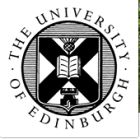Art
Art is a diverse range of human activities in creating visual, auditory or performing artifacts (artworks), expressing the author's imaginative or technical skill, intended to be appreciated for their beauty or emotional power. In their most general form these activities include the production of works of art, the criticism of art, the study of the history of art, and the aesthetic dissemination of art.
Contemporary Art
Contemporary art is the art of today, produced in the late 20th century or in the 21st century. Contemporary artists work in a globally influenced, culturally diverse, and technologically advancing world. Their art is a dynamic combination of materials, methods, concepts, and subjects that continue the challenging of boundaries that was already well underway in the 20th century. Diverse and eclectic, contemporary art as a whole is distinguished by the very lack of a uniform, organising principle, ideology, or "-ism". Contemporary art is part of a cultural dialogue that concerns larger contextual frameworks such as personal and cultural identity, family, community, and nationality.
Theory
A theory is a contemplative and rational type of abstract or generalizing thinking, or the results of such thinking. Depending on the context, the results might, for example, include generalized explanations of how nature works. The word has its roots in ancient Greek, but in modern use it has taken on several related meanings.
Art
The function of the modern artist was not to convey beauty, but to convey new truths.
Eric Kandel, The Age of Insight (2012)
Theory
I firmly believe people have hitherto been a great deal too much taken up about doctrine and far too little about practice. The word doctrine, as used in the Bible, means teaching of duty, not theory. I preached a sermon about this. We are far too anxious to be definite and to have finished, well-polished, sharp-edged systems — forgetting that the more perfect a theory about the infinite, the surer it is to be wrong, the more impossible it is to be right.
George MacDonald, in a letter to his father, quoted in George MacDonald and His Wife (1924) by Greville MacDonald
Art
I am willing to let it rest on the determination of every reader, whether the pleasure which he has received from these effects of calm and luminous distance be not the most singular and memorable of which he has been conscious... It is not then by nobler form, it is not by positiveness of hue, it is not by intensity of light... that this strange distant space possesses its attractive power. But there is one thing that it has, or suggests, which no other object of sight suggests in equal degree, and that is—Infinity. ...No work of any art, in which this expression of infinity is possible, can be perfect or supremely elevated, without it.
John Ruskin, Modern Painters (1860) Vol. 2, Ch. V

